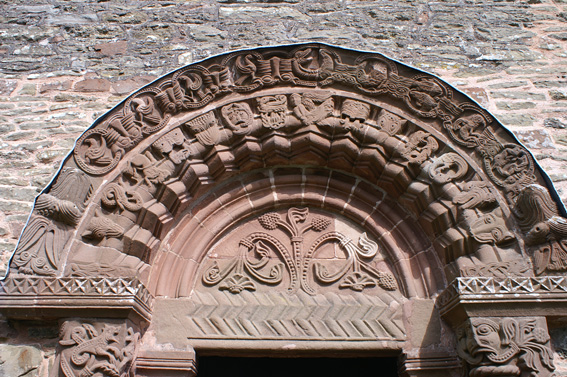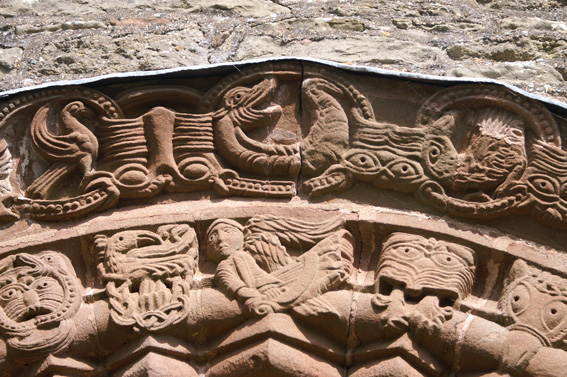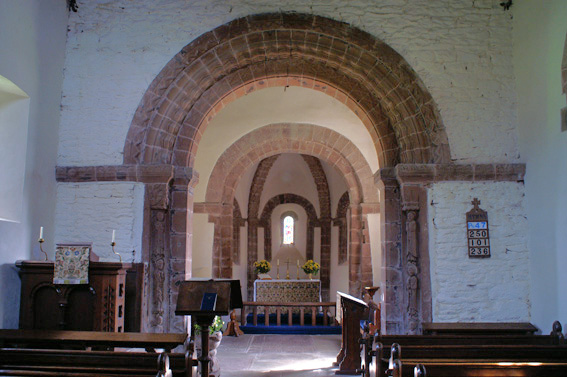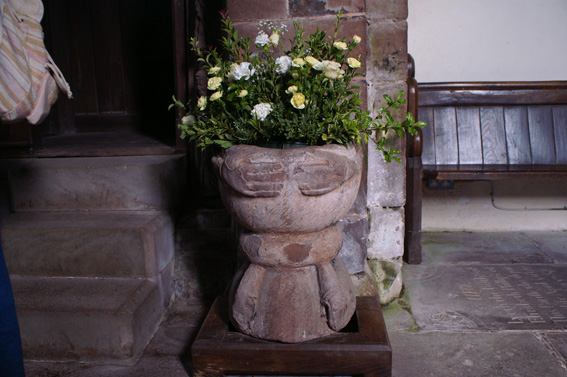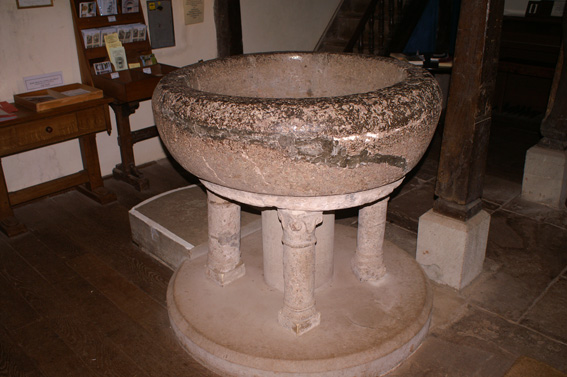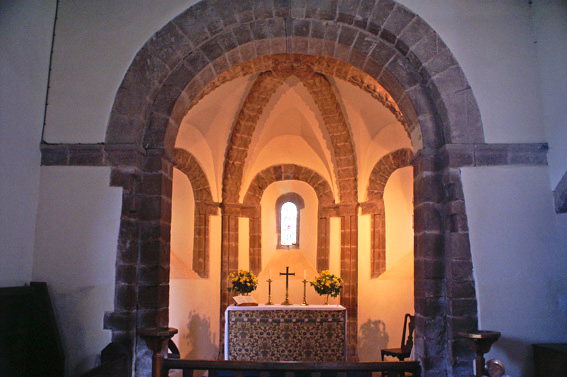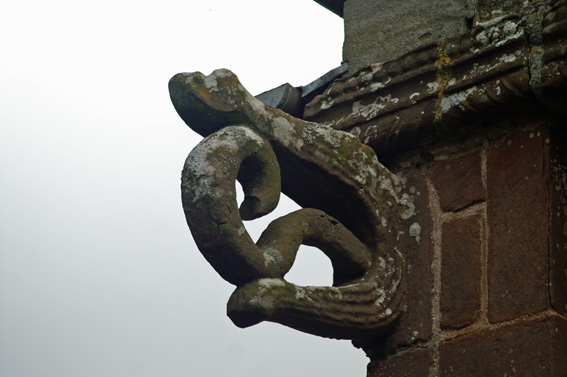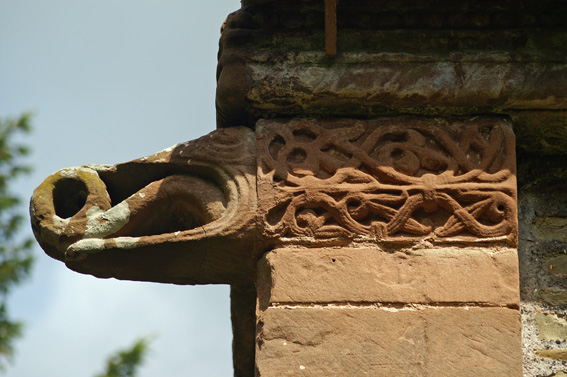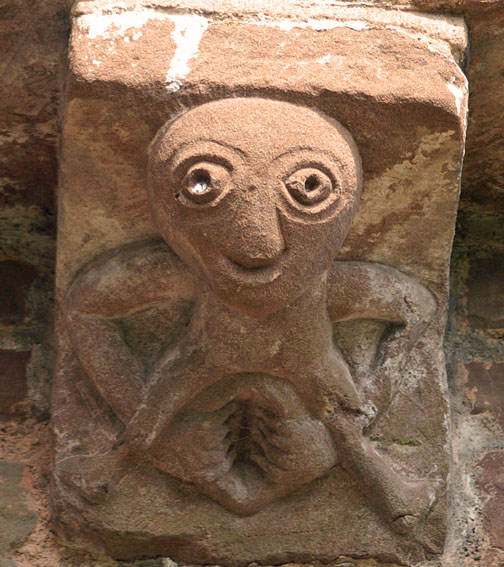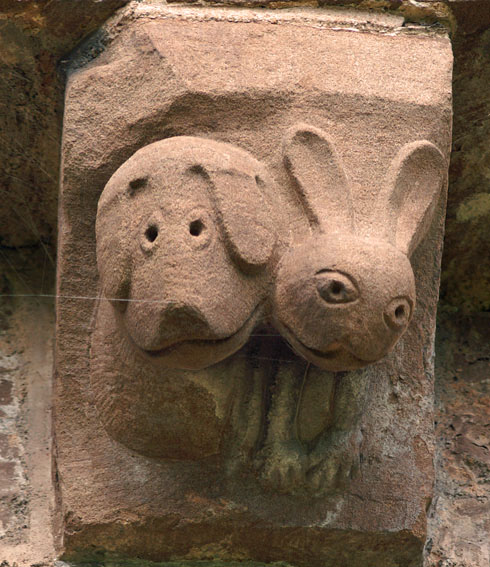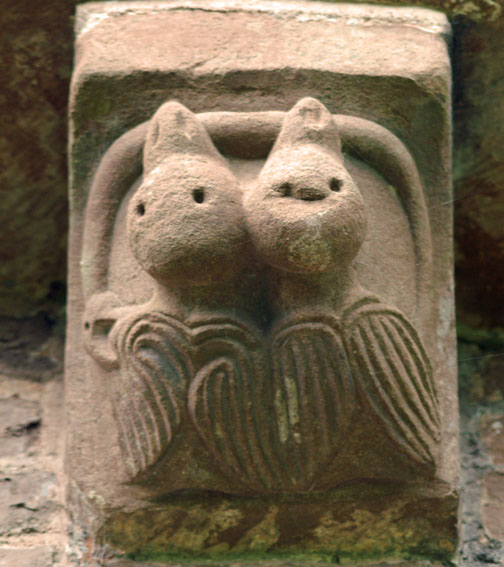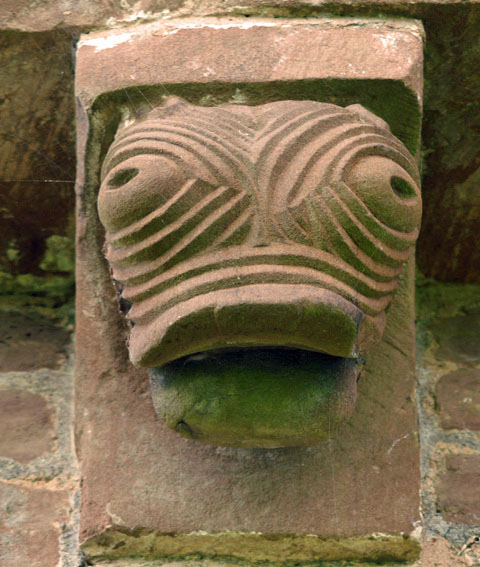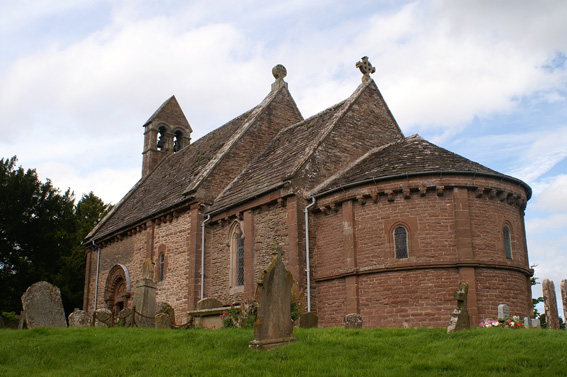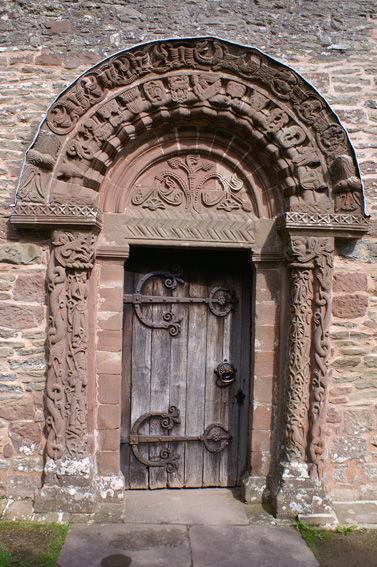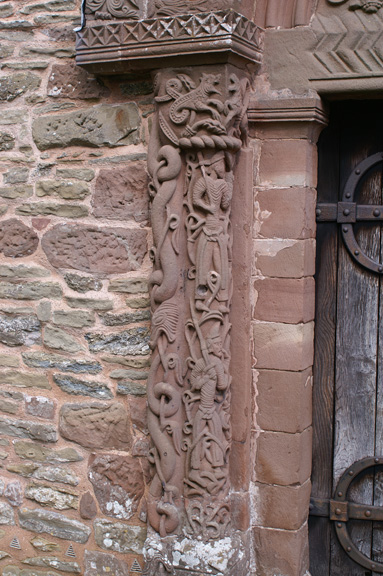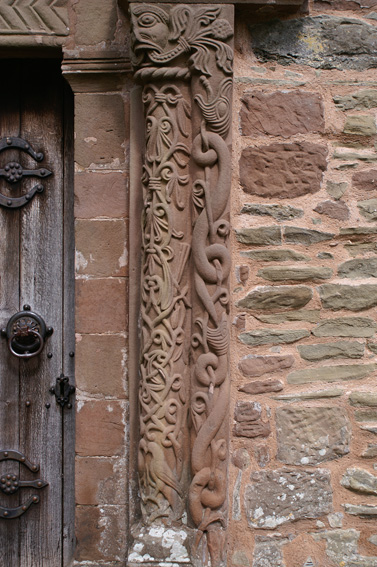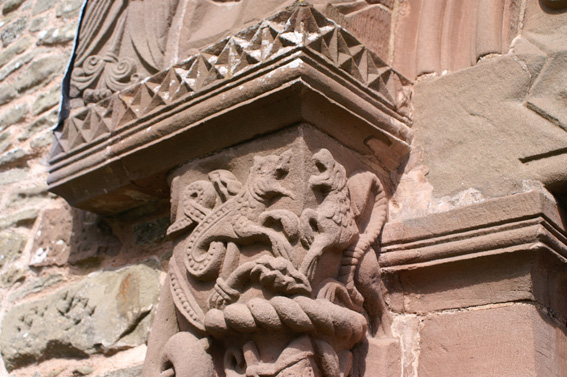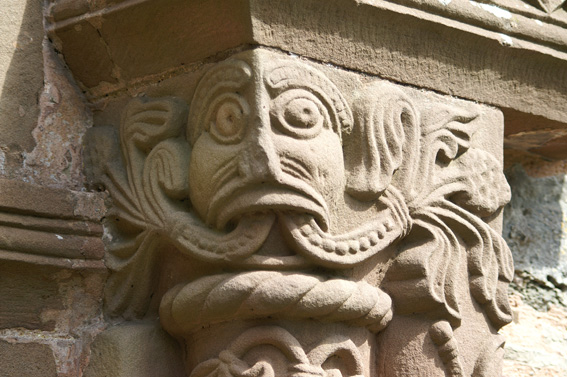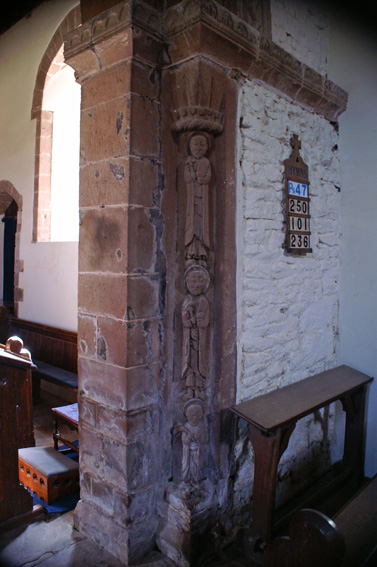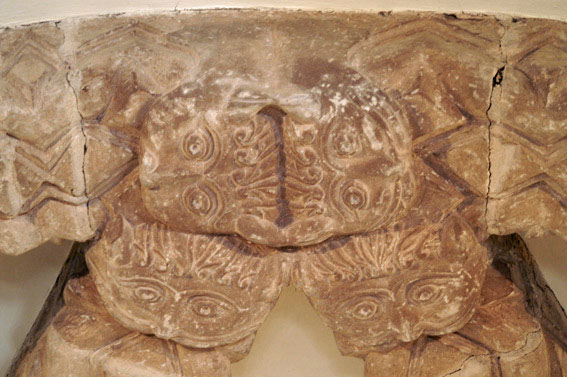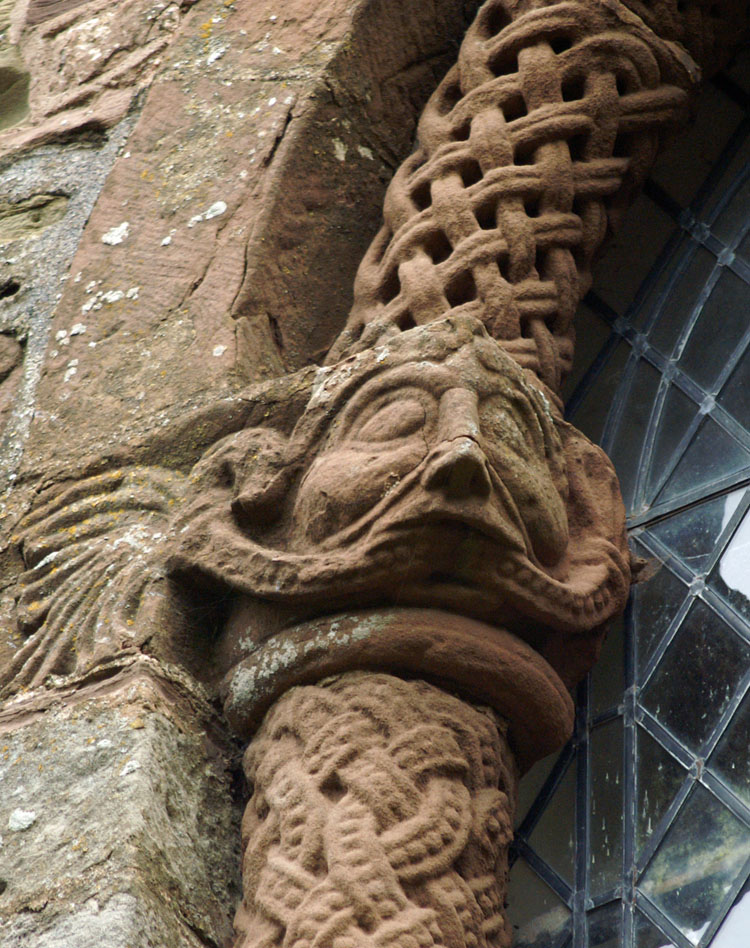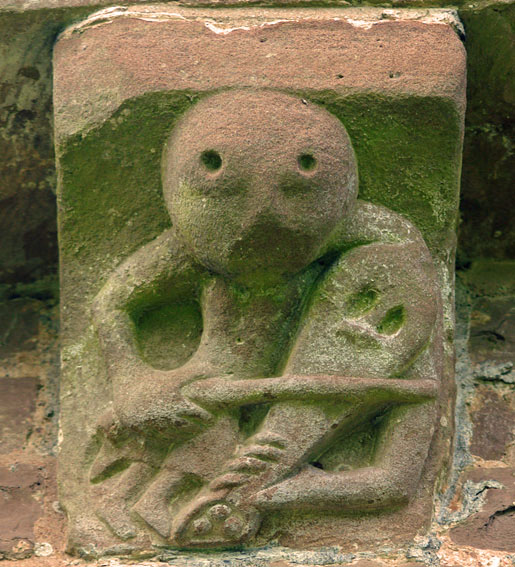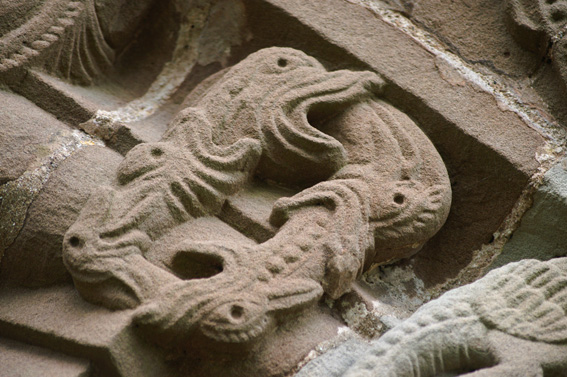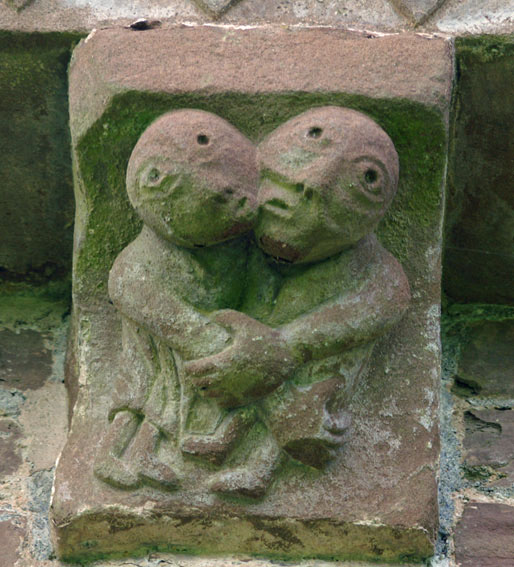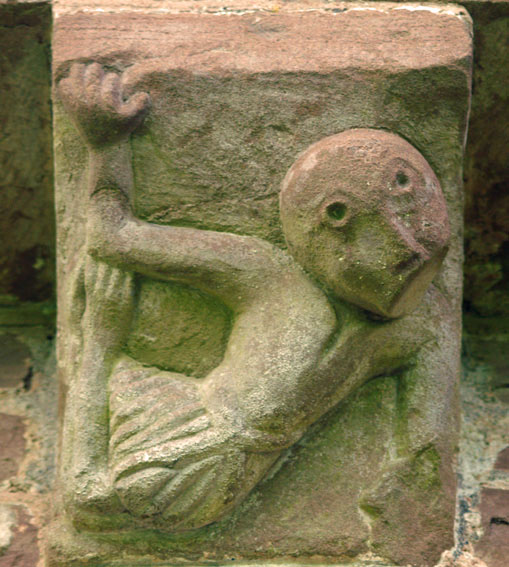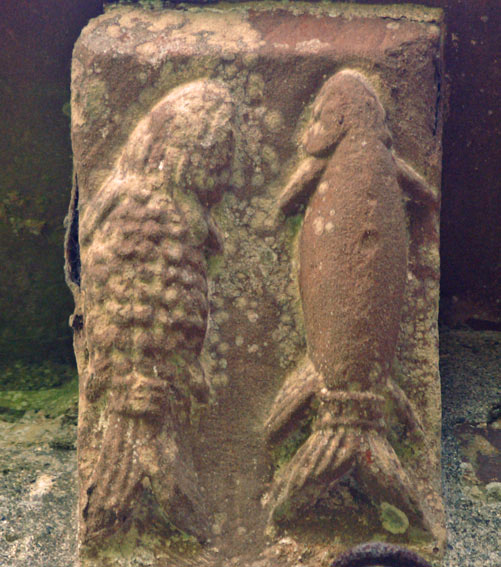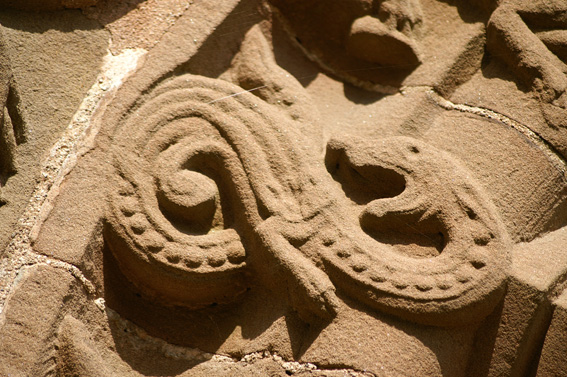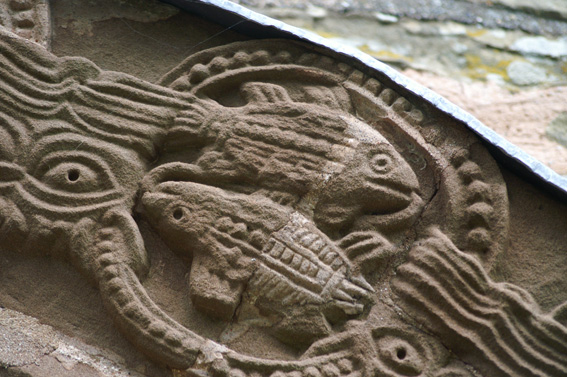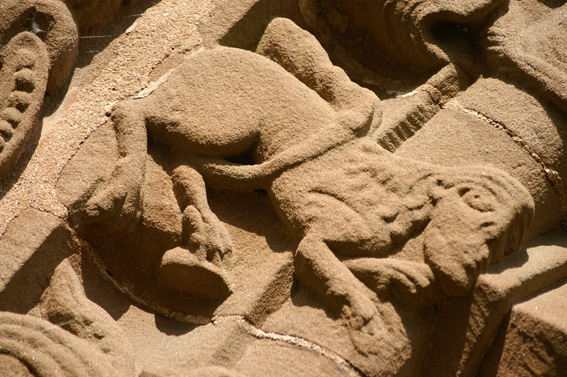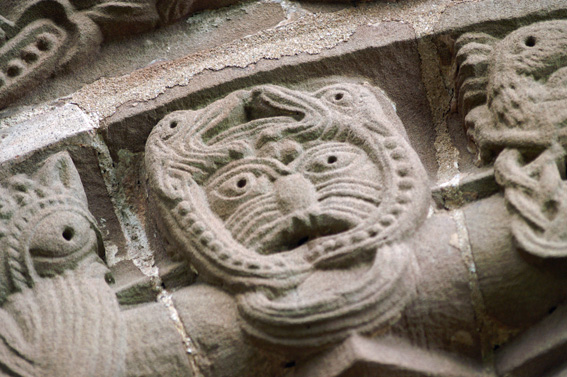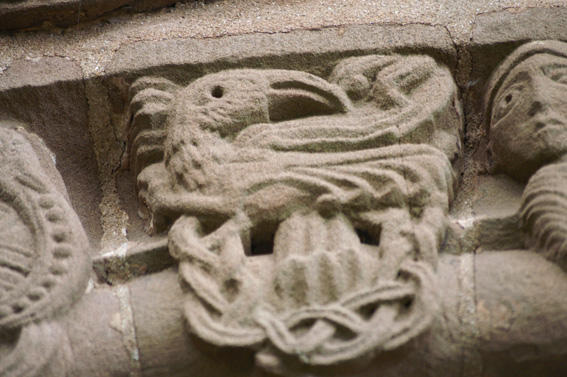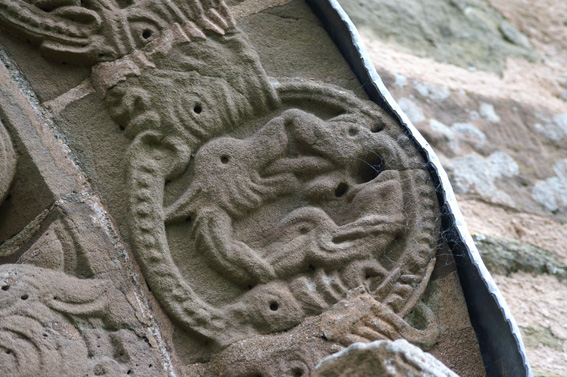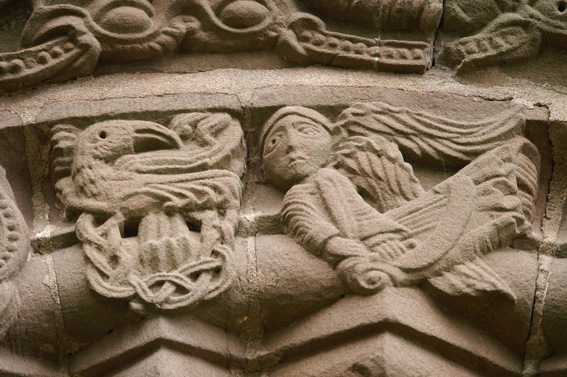|
Amongst students of church architecture few churches are as well-known as Kilpeck. To the public, few places could be more obscure!
If any church deserves the word “extraordinary” it is Kilpeck. Once adjacent to a Benedictine monastery, it dates from about 1140AD and is little changed since. Kilpeck was gifted to the splendidly-named William fitz Norman after the Conquest and the church as we know it was commissioned by his son, Hugh. It dates from comparatively late in the Norman period and yet it is awash with the most elaborate carvings, many of a distinctly un-christian nature. Celtic, Scandinavian, Anglo-Saxon and pagan imagery vies with Christian iconography in a riot of dragons, warriors, monsters and animals. What Hugh intended the parishioners to learn from these images we can only speculate, but we can detect everywhere imagery of life, death and re-birth.
Kilpeck was built by the “Herefordshire School” of masons and we know that they were influenced by the churches of South-West France and the pilgrimage destination of The Cathedral of St James at Santiago de Compostella in Northern Spain; but none of this accounts for the imagery of Kilpeck. The excellent church booklet speculates that Hugh may have returned from the First Crusade in 1096 with holy relics that needed a suitable church to house them.
The church is a three-cell affair of nave, chancel and apse. The apse ceiling is an early example of stone vaulting with decorated ribs and a stone roof boss.
|
